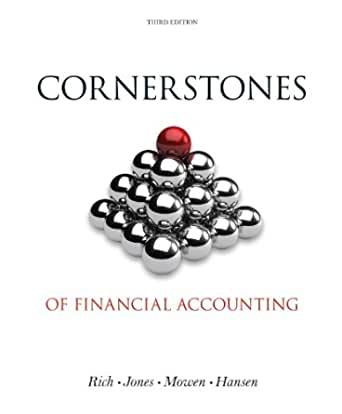case study
HRP 111 - Assignment #1 Case Study 1 Oscar Tame is the CEO of AnyDoppler Inc. His company manufactures ultra-thin speaker pads. Each pad has a wire that can connect to an iPod. The pad can be placed on any surface (e.g. wall, table or window) and utilizes the material properties of the surface to turn it into a speaker that transmits sound when activated. Oscar hired a plant manager, Sybil Vain, to oversee factory operations. He pays her an annual salary of $100,000. Factory rent amounts to $30,000 per year. During the year, Sybil purchased $500,000 worth of factory capital assets. There are 25 assembly line workers who work 8 hours a day, for 4 days a week, for 50 weeks a year at $30 per hour. The factory has a high-tech inventory system that is able to trace raw materials to each finished good accurately and inexpensively. During the year, the factory used $350,000 worth of raw materials to produce the speaker pads. Depreciation of the factory equipment amounted to $15,000 and factory electricity expenses amounted to $10,000. At the beginning of the year, Oscar purchased three company cars for the sales team. Each car cost the company $15,000. The depreciation on these cars amounted to $5,000 for the year. During the year, Oscar spent $400,000 on marketing campaigns. Oscar was paid $200,000 for the year and paid his receptionist $45,000 per year. a) Calculate AnyDoppler's product and period costs. Explain your reasons for identifying costs as either product or period costs. b) Calculate AnyDoppler's direct costs and indirect manufacturing costs. Provide explanations. c) When Oscar was reviewing the financial statements at the end of the year, he noticed that Sybil produced 10,000 units of inventory despite the fact that he told her throughout the year that they only needed to sell 6,000 units. Now the company has 4,000 units in inventory and runs the risk of them being stolen or becoming obsolete. Why do you think Sybil over-produced Inventory? Note that, at the beginning of the year, Oscar introduced a bonus compensation scheme whereby Sybil would be rewarded handsomely if she reduced manufacturing expenses. (Hint: Consider the connection among excess inventory, capitalization and allocation of product costs and how Sybil is compensated. L Case Study 2 Jolly Goods Limited specializes in hand-made Christmas ornaments. These ornaments go through three processes: cutting, assembling and finishing. Two days ago, the company received an unexpected order for 2,000 ornaments. Both the cutting and assembling departments have the capacity to fulfill the order and would have to work at 100% capacity to complete it. Due to the amount of detailed work required to produce each ornament, the finishing department does not have enough time to meet the deadline. The company as a whole is working at 85% of capacity. As a result. the company is concerned that it will be unable to accept the order. Identify the constraint and recommend a possible solution for Jolly Goods Limited







